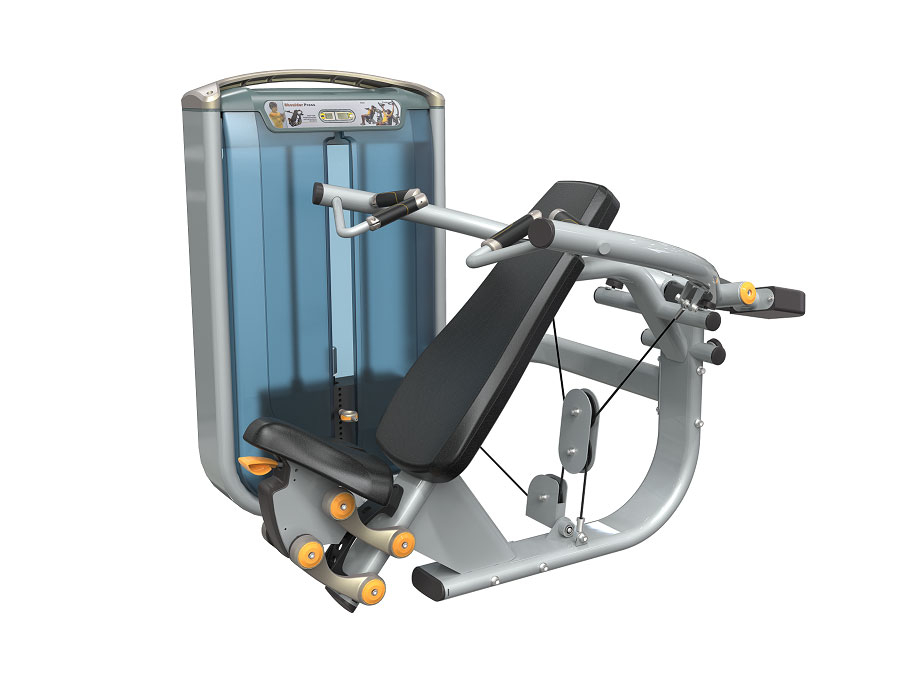China's fitness industry started to develop around 2000. From the awakening of the industry to the outbreak of the golden period of the industry, from the "closure tide" to the secondary high-speed growth of the industry brought about by the admission of new model fitness brand players, it has been nearly 20 years of development. During this period, China's fitness industry has been constantly shuffling and reshaping, forming a unique development form of China's fitness industry, and is about to enter a new round of vigorous development.
Today, let's review the development history of China's Gym market and take history as a mirror to better see the future.
2000-2003
Residents' awareness of fitness was awakened, the first batch of well-known chain gym brands were admitted, and the gym industry was budding
2004-2010
During the bonus period, a large number of players were attracted and the industry grew explosively
2011-2015
The industry entered the stage of survival of the fittest and began to explore a healthy business model
2016 - present
In a favorable environment, fitness clubs gradually adjusted their profit model, new gyms rose at the same time, and the fitness industry showed a secondary growth trend after the reshuffle
2016 was called "the first year of sports industry development" by many people in the sports industry. In that year, the government successively passed a number of strategic documents to encourage backbone fitness enterprises to become bigger and stronger in the direction of "having international competitiveness". Featured small, medium and micro fitness and leisure enterprises are developing in the direction of "specialization and innovation". At the same time, the upstream and downstream resources of the industry are integrated to form a new ecosystem and stimulate the secondary development of the domestic fitness industry.
In the latest "healthy China action (2019-2030)" released in 2019, the State Council issued a number of "hard indicators", including "encouraging individuals to engage in medium-intensity sports more than 3 times a week", "the proportion of people who often participate in physical exercise reaches more than 40%" and so on. Fitness is gradually developing towards "nationwide" and the market is sinking from first tier cities to second and third tier cities.
Different from the first industry bonus period, China's fitness industry has begun to transform towards Internet +, intelligence and personalization, and a number of new gym leaders have emerged, such as intelligent gym brand light pigsty fitness, 24h intelligent Internet fitness brand liking fit, super orangutan in group exercise class, Leke fitness on sports o2o platform, pure yoga, a Hong Kong funded high-end chain yoga studio, etc.
The new round of gym reform is mainly reflected in the following three points: · the reform of payment mode: the new fitness industry is trying to give users new changes under the slogan of "overturning the annual card and no membership consultant". The reform of fitness content: the transformation from comprehensive gym to small items such as group yoga, focusing on subdividing the track · the reform of fitness time: the new generation of consumers' pursuit of flexibility and efficiency has spawned a number of 24/7 gyms And online fitness platforms.
Key data of fitness industry
In 2019, the market scale of gymnasium industry in 18 major cities was 33.7 billion yuan
·The revenue scale of gyms in 18 major cities has exceeded 30billion yuan, which is close to the market scale of the gym industry in the UK. With the continuous emergence of various gyms, the continuous improvement of national fitness awareness and the continuous maturity and standardization of the industry, the future development can be expected.
In 2019, the total number of gyms in 18 major cities will be 28000
·The size of gyms in 18 major cities has reached nearly 30000. In the past few years, the number of gyms in China has always been growing steadily.
·During the change of market stage, gyms are constantly in the process of survival of the fittest. On average, 30%-0% of gyms operate for less than one year. Other gyms and fitness studios with stable operation have a survival cycle of about 5-10 years and 1-2 years. Gyms with poor management continue to withdraw from the market, and then they are filled by gyms with good management and new entrants.
In 2019, the total number of gym members in 18 major cities was 8.79 million
·The total number of gym members has maintained a stable overall upward trend, especially with the support of a series of favorable factors such as the increase of residents' income, the enhancement of fitness awareness, government policies and industrial capital support in the future, the annual compound growth rate is expected to be between 15%-20%.
In 2019, the penetration rate of gyms in 18 major cities will be 3.9%
·The penetration rate of fitness members varies greatly among different cities. The penetration rate of first tier cities represented by Beijing and Shanghai can reach 6%, that of second tier cities in economically developed East China and South China can reach 3.5%, and that of provincial capitals in North China and central China is about 3%.
·In general, compared with developed countries (20% in the United States, 15% in the United Kingdom and 8% in Japan), the penetration rate of domestic gyms still has great potential to improve.
In 2019, the total number of members of the top ten gyms in 18 major cities will be 1.52 million
·The top ten gyms are jinjiliao, weiershi, yitrillion Wade, shushibao, Zhongjian fitness, yinjim, Goodfield, and the new gyms with rapid growth, Lexus, kuaixi and liking fit, which are represented by the traditional large gyms. They have a total of 1.52 million members, accounting for 17% of all fitness members.
Under the influence of the epidemic in 2020, the reshuffle of the gym market will become more obvious. 2021 is coming, and China's Gym market has great potential. Whether we can seize the opportunity, China's Gym market will usher in greater changes.







管理员
该内容暂无评论